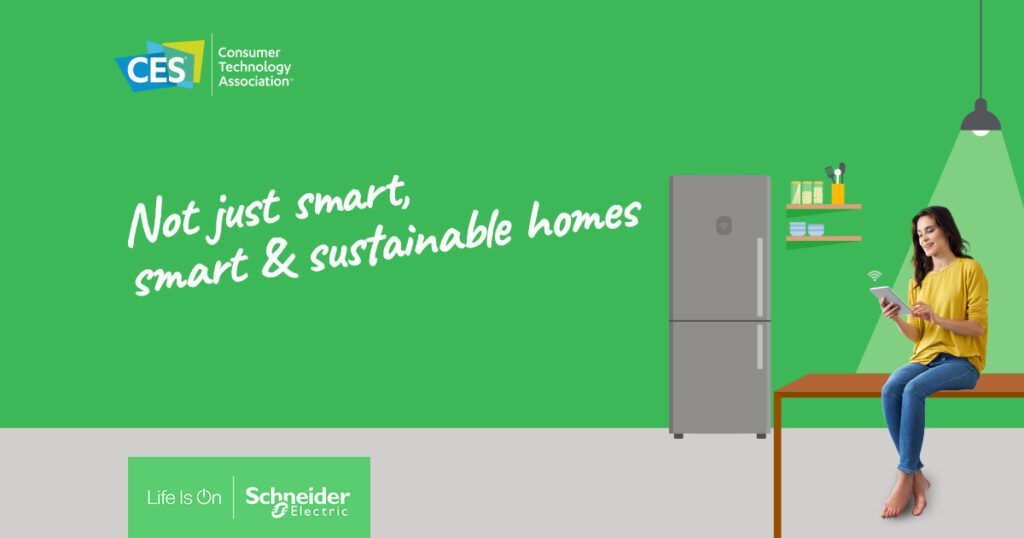The current climate crisis is everyone’s responsibility. Homes, for example, were responsible for 24% of all greenhouse gas emissions in Europe this past year, with similar numbers observed in other developed areas of the world. By 2050, households are expected to be the largest consumer of electricity and the biggest contributor of CO2 emissions.
Ahead of the Consumers Electronic Show (CES) this coming January, how can technology help to avoid climate catastrophe amidst economic pressures faced by millions worldwide? And how can it deliver the homes of the future?

A picture for the ages
Wildfires, hurricanes and record-breaking temperatures are some of the biggest culprits impacting people’s homes and livelihoods this past year – these are direct consequences of climate change. With 2050 net zero targets set, there is no leniency period of gradual adaptation anymore.
We have run out of years to invest slowly and carefully. The next 10 years will be determinant to what our long-term future looks like. After all, what we build today will have an immediate effect on the environment tomorrow. The pressure is on, and homes could have a game-changing role to play.
The protagonist is your home
More than ever, over the past few years, homes have been our sanctuary. The time we spend here have increased significantly. At home we work, we learn, we entertain, we teach, we strive, we danse, etc. And so the amount of energy we need to power our homes is increasing drastically as well.
Hopefully, the residential sector currently holds the greatest potential for decarbonization out of all buildings segment. The first step is to accelerate the transition to renewable energies to decarbonize the supply of energy, like on-site solar systems. However, renewable energy sources are not the be-all and end-all of sustainability. Wasted energy needs addressing.
Efficiency is the next big step. Smart technologies and energy management systems driven by AI (Artificial Intelligence) are existing resources that optimize our energy consumption. These solutions will also give consumers more control over their home management and experience, in a smarter and more sustainable way. However, why stop at net zero when there is so much potential for homes globally?
Energy-positive homes
Instead of only consuming energy, residential homes can become sources of it too. For example, a fifth of Europe’s energy needs could be sourced through solar energy from panels on existing rooftops. Not only would consumers save on energy bills, but they could also earn extra money by selling excess energy back to the grid.
Electric vehicles are another key component that could work to the benefit of households. As our transportation becomes more electric, car batteries can become back-up generators, so that excess energy produced can be safely stored and released only when needed. Paired with smart energy management systems, and homes could become intelligent and efficient hubs of clean energy that support consumers, as well as the grid.
The resources to completely overhaul the residential sector exist and are ready to be deployed. As we stand, the biggest roadblock to energy-positive homes of the future is not the lack of technology, but our mindset. Changing it is where the journey starts.
Don’t miss the CES event in Las Vegas, Jan 5 – 8 of 2023, where Schneider Electric will present its latest innovative solutions that can revolutionize the way we use and manage energy.
In the meanwhile you can watch the keynote from CES 2022 to see the next generation of home innovations!
Get more updates about CES from Home of the Future.



